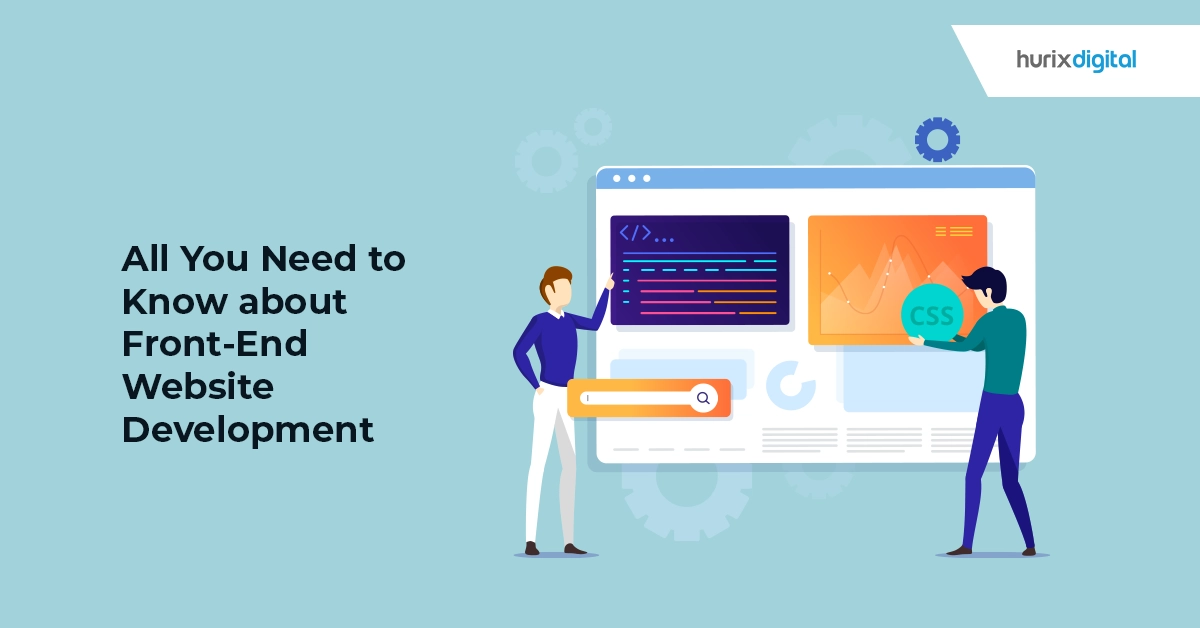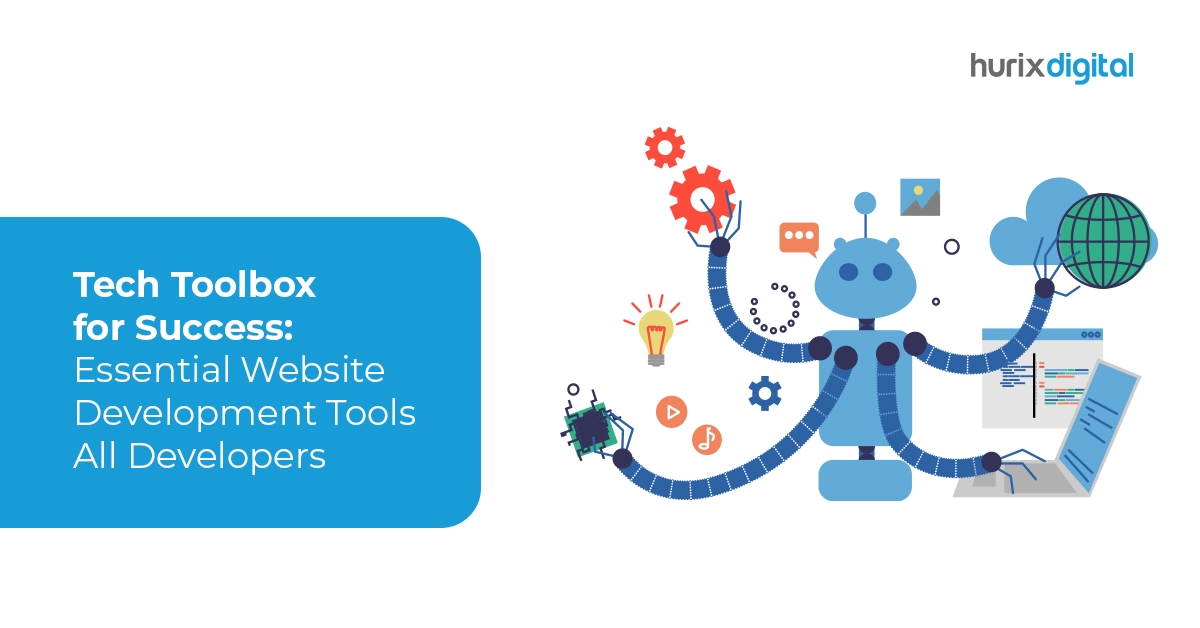
All You Need to Know About Front-End Website Development
Summary
This article explores the service of front-end website development, detailing its definition, the involved process, essential skills needed, and the advantages it offers businesses. It also examines how collaboration with skilled professionals can enhance UI design and overall user experience.
Today, websites continue to be important pieces of digital real estate for businesses. Customers and clients use them for a wide range of functional purposes, from seeking information and paying bills to purchasing new products.
However, the concept of a static website is a thing of the past. The user interface of a contemporary website must be friendly, fully functional, and intuitive. The website must empower customers and clients to achieve their purpose within minutes.
However, front-end website design is expensive, time-consuming, and highly specialized, requiring specific expertise. This is where front-end website development, as a service, can help businesses simplify and optimize the process.
In this blog, we deconstruct the development of front-end websites, the key pillars, and the benefits of partnering to avail front-end development services for businesses.
Table of Contents:
- What is Front End Website Development?
- Front End as a Service
- Benefits of Front-End Development Services for Businesses
- Conclusion
What is Front-End Website Development?
Today, internet users place a high premium on being able to navigate and interact with a website swiftly and seamlessly. They aspire to find information within a few clicks and be engaged in creative ways. A smooth user experience also seeds a positive, high-trust impression of the brand on consumers.
Front-end website development refers to the process of building a graphical user interface (UI), which effectively facilitates these outcomes. The development of the UI comprises aspects such as layout, design, navigation menu, buttons, and animations.
The process is facilitated by highly skilled front-end developers and UI designers who specialize in their fields of work. The difference between front-end and back-end developers is that the latter focuses on the coding aspects of the project.
Hence, starting from scratch can be expensive and time-consuming for businesses. This is where front-end website development as a service is revolutionizing seamless, effective, and intuitive UI design and development.
Also Read: Maximizing Efficiency: Top 5 DevOps Practices Every Team Should Follow
Front-End as a Service (FaaS)
Today, a growing number of businesses are looking to build or enhance their websites to make them more interactive, intuitive, and easy to navigate. However, businesses may not have the skills to do so in-house.
Front-end website development as a service is a solution that enables businesses to upgrade their websites efficiently and cost-effectively. Here’s what this service entails.
1. The Process
Setting up a front-end website development team is not a viable option for most businesses. Rather than developing the website in-house, companies can partner with a technology specialist with front-end website development experience and expertise to design and deliver the project.
Thus, businesses need not engage in hiring or onboarding new team members, and can stay focused on their core job roles. On the other hand, the technology partner takes care of their website development needs.
2. Key Skills
Front-end website development requires engineers and designers with specialized skills to design and develop a superior UI. Development teams come with these skill sets:
- HTML (Hypertext Markup Language) delivers the structure and web page content
- CSS (Cascading Style Sheets) determines the visual aspects of a website, such as the layout, fonts, animations, and color palettes.
- JavaScript language enables the interactive, dynamic aspects of each web page.
- Responsive Design enables websites to automatically adjust to the screen size and be compatible with a wide range of smart devices.
- Front End Frameworks provide pre-built components and functionalities that empower developers to streamline the process. This approach enables them to focus on strategically building superior, innovative, and engaging user experiences.
3. Development Project Workflow
Businesses looking to avail of front-end development services must be aware of the various steps involved in the process as follows:
Stage 1: Planning and Design
Front-end website development projects begin by identifying a business’s key needs and solutions to address these issues.
Based on business challenges, front-end project partners create mock-up designs that creatively and innovatively solve problems. Once the website’s UI design is finalized and approved, it’s time for the next stage.
Stage 2: Development
This is the process of translating the design into a functional, easy-to-navigate website. Front-end development teams must adhere to best practices and implement global website accessibility standards to build inclusive products relevant to a wider audience.
Stage 3: Testing and Fixing Bugs
Once the website is developed, it’s time to test the interface and identify and fix bugs. The front-end team must offer a seamless user experience and ensure that the product is market-ready.
Stage 4: Deployment
The product is now ready to be deployed on a live server and accessed by users. Depending on its purpose, customers, clients, vendors, and general users may access it. The front-end development team will monitor the live performance to ensure that it functions properly once live.
Stage 5: Maintenance
Continued monitoring and maintenance of the website ensure that it functions well in the long term. In case of any issues, the front-end team will address and fix them immediately so that the website is never down for more than a few minutes.
Benefits of Front-End Development Services for Businesses
Businesses can reap multiple benefits by partnering with an expert in front-end development services, as follows:
- Reduced costs associated with the entire process, as businesses need not hire in-house talent for a temporary job role.
- Team members can focus on strategic work related to the core business.
- Superior technology front-end development services partners offer best-in-class talent, expertise, and turnkey solutions.
- Businesses can also avail of maintenance services to ensure quick resolutions in case of any challenges.
Also Read: Top 5 Challenges in Enterprise Mobile App Development and How to Overcome Them
Conclusion
Front-end development as a service is revolutionizing how website UIs are designed and developed by elevating the standards. Businesses can stay focused on their revenue and profitability goals while availing themselves of expert services that deliver sustainable, long-term solutions.
If your business is looking to transform its website’s UI and deliver a superior user experience to all stakeholders, Hurix Digital has the expertise to support your specific needs. Our front-end development services division comprises top talent and adopts best practices to design world-class websites for our partners.
Reach out to us to start a conversation.

Vice President & SBU Head –
Delivery at Hurix Technology, based in Mumbai. With extensive experience leading delivery and technology teams, he excels at scaling operations, optimizing workflows, and ensuring top-tier service quality. Ravi drives cross-functional collaboration to deliver robust digital learning solutions and client satisfaction








